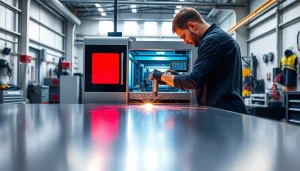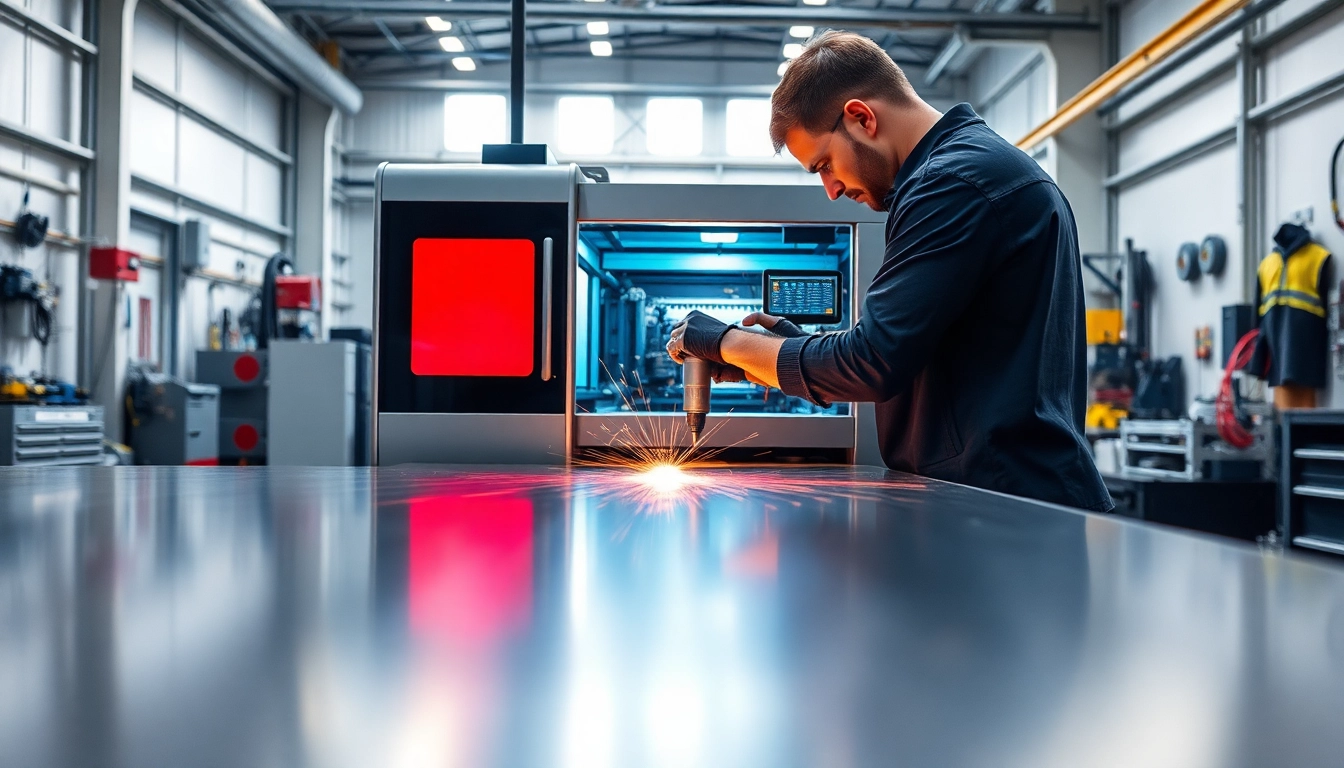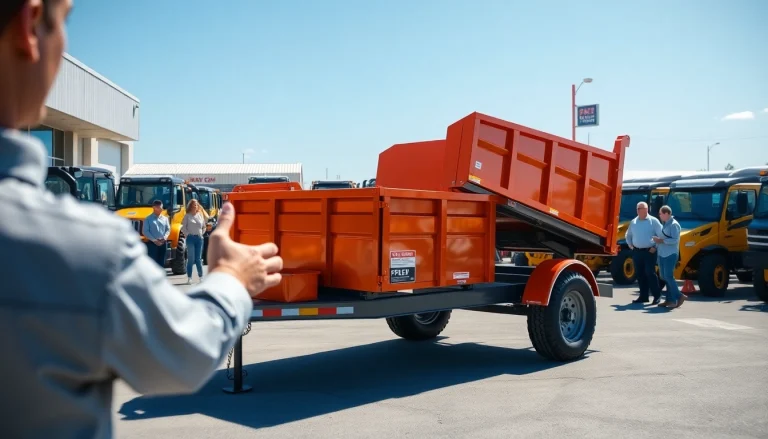Understanding Laser Welding Machine Basics
What is a Laser Welding Machine?
A Laser welding machine is a high-precision industrial tool used for welding materials through the application of focused laser beams. This technology allows for precise and efficient operations, which makes it a preferred choice among manufacturers in various industries. Laser welding can join a variety of materials, including metals and thermoplastics, by concentrating heat in a small area, resulting in minimal thermal impact on adjacent areas.
Components of a Laser Welding Machine
Laser welding machines are composed of several key components that work together to ensure efficient and effective operation. These components include:
- Laser Source: This is the heart of the machine, responsible for generating the laser beam. Common laser types include fiber lasers, CO2 lasers, and solid-state lasers.
- Optical System: This system directs and focuses the laser beam onto the workpiece. It consists of mirrors and lenses that ensure the laser beam is precisely focused.
- Control System: The control unit allows operators to manage and adjust the machine’s parameters, such as laser intensity, speed, and focus.
- Work Table: This is the surface where the parts to be welded are placed. It often includes features to facilitate clamping and positioning of workpieces.
- Cooling System: Laser welding generates significant heat; therefore, a cooling system is crucial to maintain optimal operational temperatures for the laser source and other components.
How Laser Welding Machines Work
The operation principle of a laser welding machine is relatively straightforward yet highly effective. The machine emits a concentrated laser beam directed toward the workpieces being joined. The energy from the laser beam raises the temperature of the material at the focal point to its melting point, allowing the materials to flow together. As the laser moves along the joints, it either creates a solid weld pool (in continuous welding) or focuses intermittently, depending on the application. After the laser moves away, the molten material solidifies, producing a robust bond.
Advantages of Using Laser Welding Machines
Efficiency and Speed of Laser Welding Machines
One of the most significant advantages of laser welding machines is their operational efficiency. These machines can operate at high speeds, often welding materials faster than traditional welding methods. The focused nature of the laser allows for deep penetration with minimal heat input, reducing the time needed for each weld and facilitating high production rates. For manufacturers aiming to boost productivity, integrating laser welding can lead to significant time savings and improved workflow.
Precision Benefits of Laser Welding Machines
Precision is critical in manufacturing, especially in applications requiring tight tolerances. Laser welding machines deliver exceptional accuracy due to their ability to concentrate energy on a very small area, ensuring that the welds are consistent and high quality. This precision minimizes the risk of defects such as warping or misalignment, which are more common in traditional welding processes. As a result, products produced using laser welding often require fewer finishing operations, saving both time and resources.
Cost-Effectiveness of Laser Welding Machines
While the initial investment in laser welding technology can be substantial, the long-term cost savings often justify the expense. The efficiency and speed of laser welding reduce labor costs since fewer workers are needed to achieve higher output. Additionally, the precision of laser welding reduces material waste and minimizes the need for corrective processes. Over time, these savings can significantly improve a company’s bottom line, making laser welding an economically prudent choice for many applications.
Applications of Laser Welding Machines
Industries Benefiting from Laser Welding Machines
Laser welding machines are utilized across various industries, showcasing their versatility and effectiveness. Key sectors include:
- Aerospace: In this industry, the weight-to-strength ratio is critical. Laser welding provides the necessary precision and strength for aircraft components.
- Automotive: Manufacturers use laser welding for tasks such as body assembly, chassis construction, and exhaust systems, where speed and accuracy are paramount.
- Electronics: Laser welding is instrumental in assembling delicate electronic components, ensuring that even the most intricate parts can be joined without damage.
- Medical Devices: In the medical field, cleanliness and precision are vitally important. Laser welding allows for the creation of intricate assemblies in surgical instruments and devices.
Common Use Cases for Laser Welding Machines
Within these industries, there are several specific applications where laser welding machines excel:
- Joining Thin Materials: Laser welding is particularly effective for thin materials, commonly used in sectors such as electronics and automotive.
- Sealing: In the medical device industry, laser welding is often employed to seal components in a way that maintains sterile integrity.
- Brazing: Laser machining can also be adapted for brazing applications where different metals are joined using a filler material.
- Overlaying: Laser welding allows for laser cladding services, where coating materials are applied to surfaces for wear resistance.
Future Trends in Laser Welding Machine Applications
The future of laser welding looks promising, with emerging trends indicating increased adoption and innovation. Some anticipated developments include:
- Automation: The integration of robotic systems with laser welding is expected to grow, increasing throughput and efficiency while reducing human error.
- AI and Machine Learning: These technologies may enhance laser welding processes by optimizing parameters in real-time based on data analytics.
- Hybrid Manufacturing: Combining laser welding with additive manufacturing techniques promises new possibilities for creating complex geometries and reducing material waste.
Challenges and Considerations
Common Issues with Laser Welding Machines
While laser welding offers numerous advantages, it is not without its challenges. Common issues may include:
- Material Compatibility: Not all materials are suitable for laser welding, particularly reflective metals like copper and aluminum, which can pose problems with energy absorption.
- Set-Up Time: Initial setup and calibration can be time-consuming, especially for complex parts that require specific alignment or parameters.
- Cost of Equipment: The high initial cost of purchasing laser welding machines can be a barrier to entry for smaller manufacturers.
Safety Measures with Laser Welding Machines
Safety is paramount in any industrial process, particularly in laser welding, where intense light and heat are involved. Essential safety measures include:
- Protective Gear: Operators must wear appropriate protective eyewear to shield against harmful laser radiation and should cover exposed skin to prevent burns.
- Ventilation: Proper ventilation systems should be in place to dissipate fumes generated during the welding process, which can be hazardous to health.
- Training: Comprehensive training programs for operators can reduce the risk of accidents and ensure that all safety protocols are followed.
Maintenance Best Practices for Laser Welding Machines
To ensure optimal performance and longevity, regular maintenance of laser welding machines is essential. Best practices include:
- Regular Cleaning: Keeping the optical components clean is crucial. Dust and debris can distort the laser beam and reduce effectiveness.
- Inspection: Periodic inspections of mechanical components, electrical connections, and cooling systems can help identify potential issues before they escalate.
- Calibration: Routine calibration of the laser and optical systems is vital for maintaining the precision and reliability of the welding process.
Conclusion: The Future of Laser Welding Machines
Innovations Shaping Laser Welding Machines
The landscape of laser welding is evolving rapidly due to technological advancements. Innovations such as laser adaptive control systems and improved cooling technologies are enhancing the capabilities of laser welding machines. Furthermore, developments in laser sources are increasing efficiency and flexibility, allowing for a broader range of materials and applications.
Long-Term Benefits of Adopting Laser Welding Machines
For manufacturers considering the shift to laser welding, the long-term benefits are substantial. These machines not only enhance productivity but also improve quality and reduce costs through material savings and efficient processes. As industries continue to seek faster turnaround times and higher precision products, laser welding will likely play a pivotal role in meeting these demands.
Final Thoughts on Laser Welding Machines
In conclusion, laser welding machines represent a significant technological advancement in the field of manufacturing. Their efficiency, precision, and potential for cost savings make them a valuable asset in various industrial applications. As technology progresses, the capabilities and applications of laser welding will only expand, solidifying its importance in the manufacturing landscape for years to come.





















+ There are no comments
Add yours